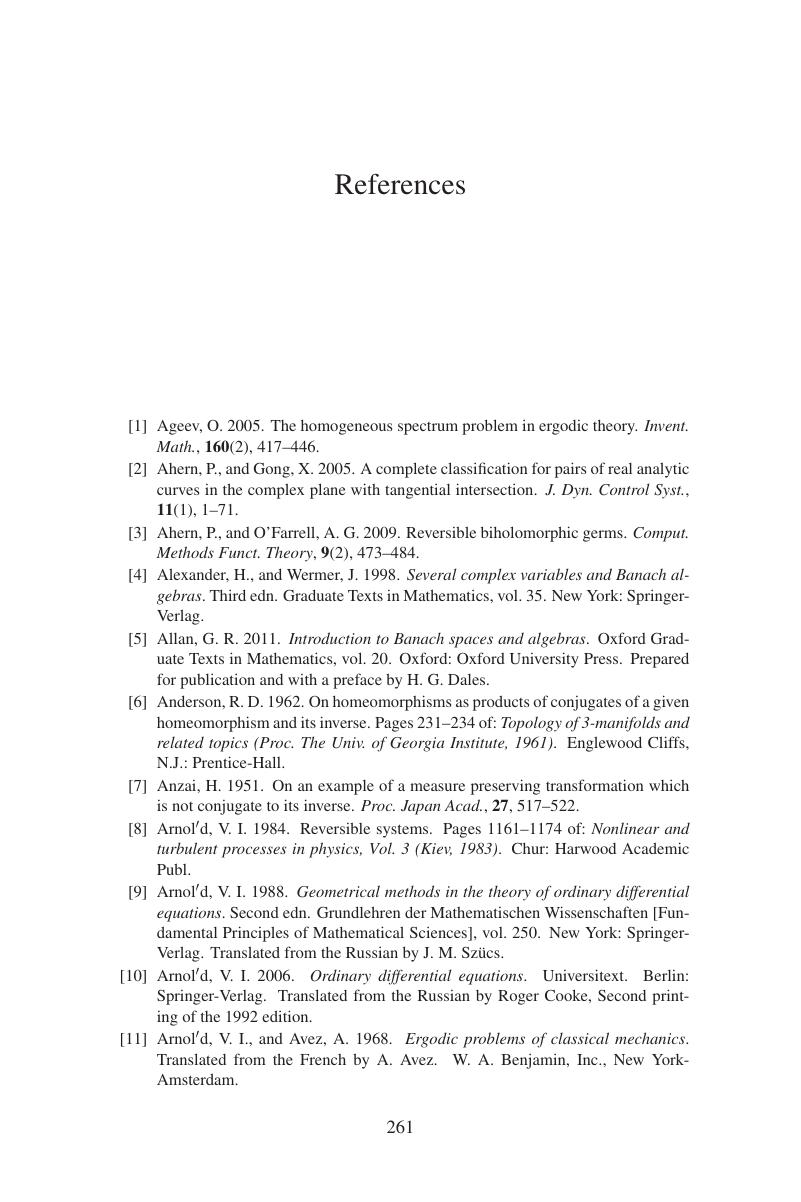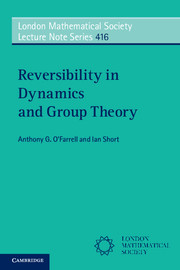Book contents
- Frontmatter
- Contents
- Preface
- 1 Origins
- 2 Basic ideas
- 3 Finite groups
- 4 The classical groups
- 5 Compact groups
- 6 Isometry groups
- 7 Groups of integer matrices
- 8 Real homeomorphisms
- 9 Circle homeomorphisms
- 10 Formal power series
- 11 Real diffeomorphisms
- 12 Biholomorphic germs
- References
- List of frequently used symbols
- Index of names
- Subject index
- References
References
Published online by Cambridge University Press: 05 June 2015
- Frontmatter
- Contents
- Preface
- 1 Origins
- 2 Basic ideas
- 3 Finite groups
- 4 The classical groups
- 5 Compact groups
- 6 Isometry groups
- 7 Groups of integer matrices
- 8 Real homeomorphisms
- 9 Circle homeomorphisms
- 10 Formal power series
- 11 Real diffeomorphisms
- 12 Biholomorphic germs
- References
- List of frequently used symbols
- Index of names
- Subject index
- References
Summary

- Type
- Chapter
- Information
- Reversibility in Dynamics and Group Theory , pp. 261 - 274Publisher: Cambridge University PressPrint publication year: 2015



